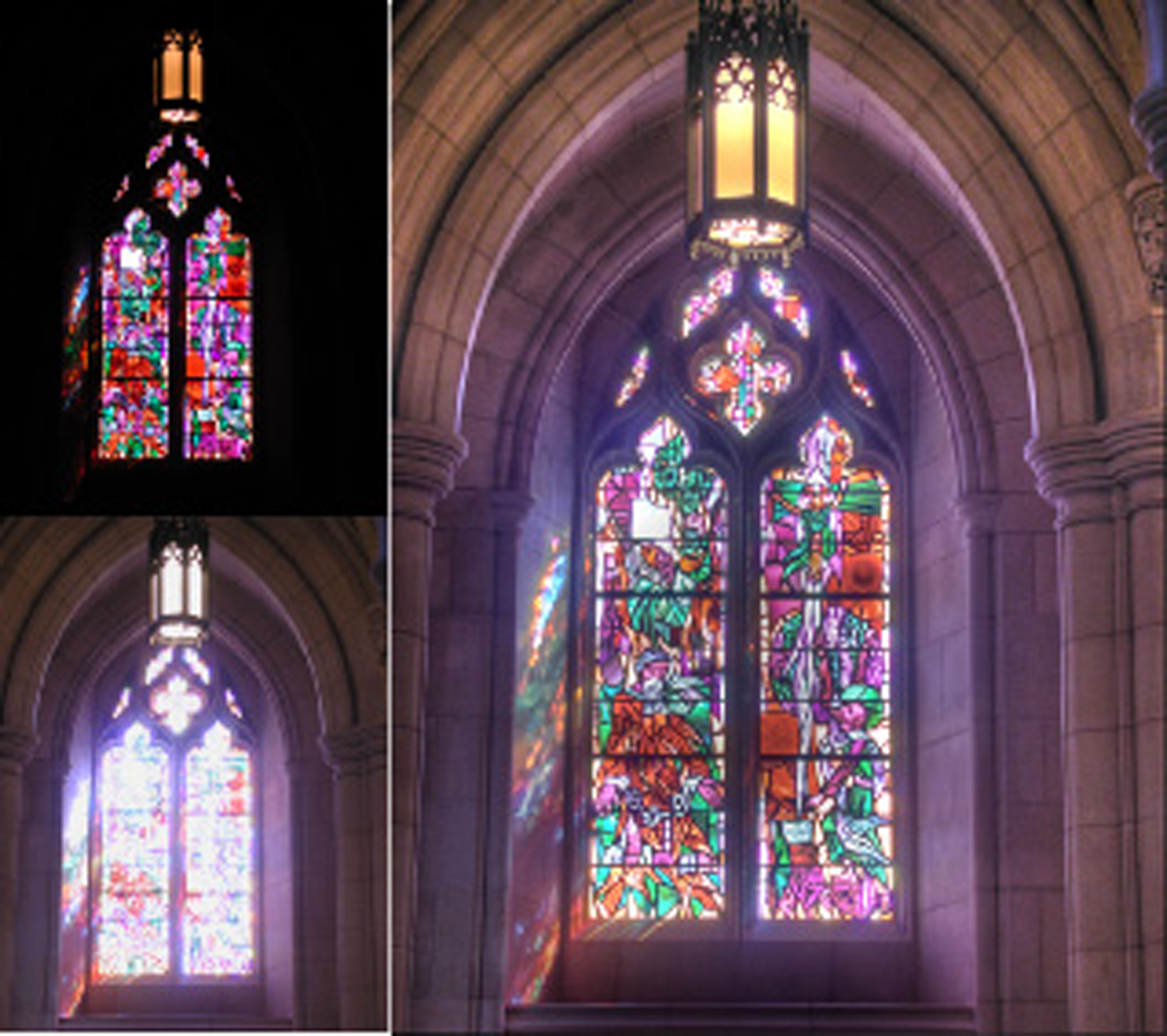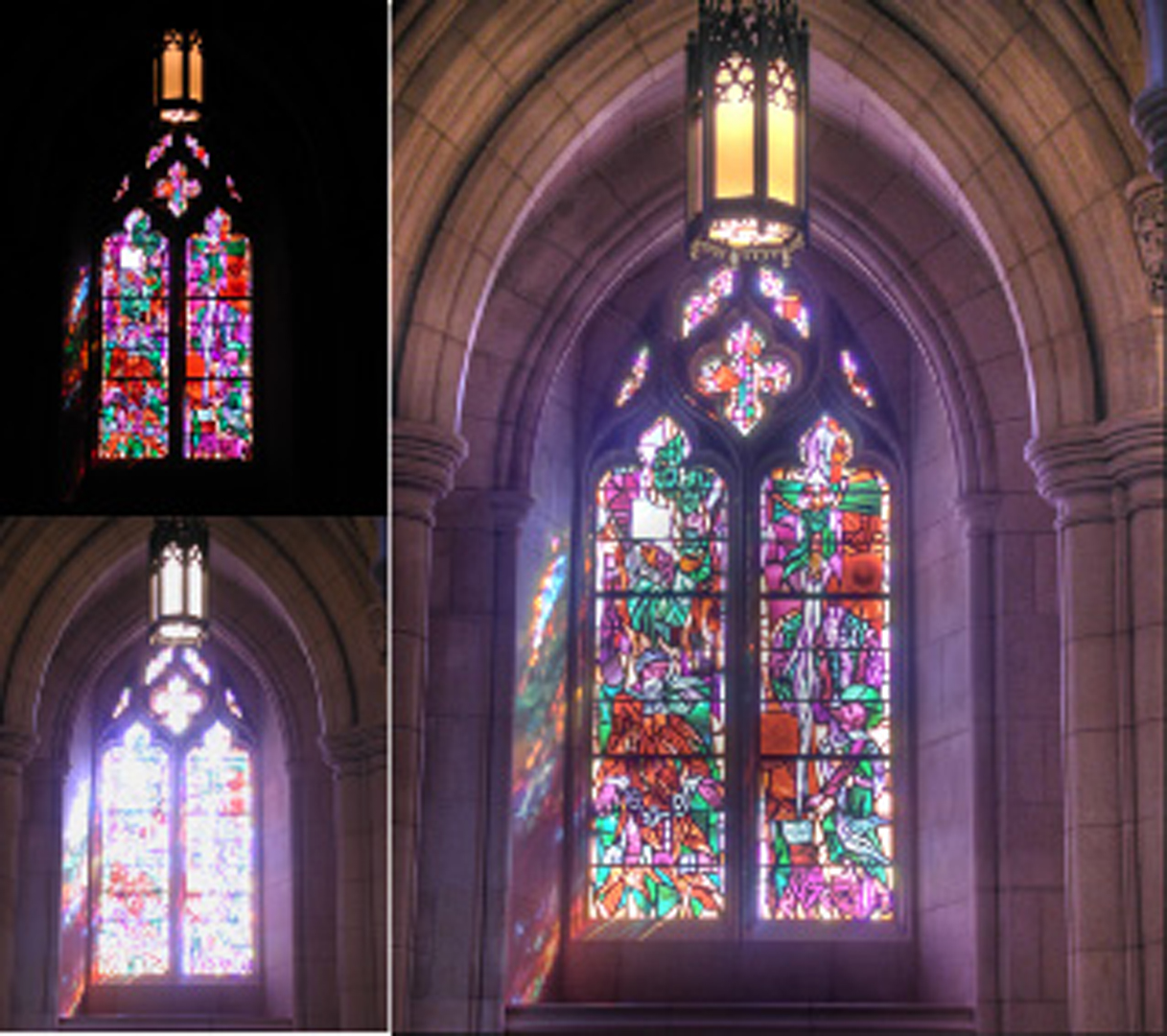“Gradient domain high dynamic range compression”
Conference:
Type(s):
Title:
- Gradient domain high dynamic range compression
Presenter(s)/Author(s):
Abstract:
We present a new method for rendering high dynamic range images on conventional displays. Our method is conceptually simple, computationally efficient, robust, and easy to use. We manipulate the gradient field of the luminance image by attenuating the magnitudes of large gradients. A new, low dynamic range image is then obtained by solving a Poisson equation on the modified gradient field. Our results demonstrate that the method is capable of drastic dynamic range compression, while preserving fine details and avoiding common artifacts, such as halos, gradient reversals, or loss of local contrast. The method is also able to significantly enhance ordinary images by bringing out detail in dark regions.
References:
1. AGGARWAL, M., AND AHUJA, N. 2001. High dynamic range panoramic imaging. In Proc. IEEE ICCV, vol. I, 2-9.Google Scholar
2. AGGARWAL, M., AND AHUJA, N. 2001. Split aperture imaging for high dynamic range. In Proc. IEEE ICCV, vol. II, 10-17.Google Scholar
3. CHIU, K., HERF, M., SHIRLEY, P., SWAMY, S., WANG, C., AND ZIMMERMAN, K. 1993. Spatially nonuniform scaling functions for high contrast images. In Proc. Graphics Interface ’93, Morgan Kaufmann, 245-253.Google Scholar
4. COHEN, J., TCHOU, C., HAWKINS, T., AND DEBEVEC, P. 2001. Real-time high-dynamic range texture mapping. In Rendering Techniques 2001, S. J. Gortler and K. Myszkowski, Eds. Springer-Verlag, 313-320. Google Scholar
5. DEBEVEC, P. E., AND MALIK, J. 1997. Recovering high dynamic range radiance maps from photographs. In Proc. ACM SIGGRAPH 97, T. Whitted, Ed., 369-378. Google Scholar
6. DEBEVEC, P. 1998. Rendering synthetic objects into real scenes: Bridging traditional and image-based graphics with global illumination and high dynamic range photography. In Proc. ACM SIGGRAPH 98, M. Cohen, Ed., 189-198. Google Scholar
7. DICARLO, J. M., AND WANDELL, B. A. 2001. Rendering high dynamic range images. In Proceedings of the SPIE: Image Sensors, vol. 3965, 392-401.Google Scholar
8. FRANKOT, R. T., AND CHELLAPPA, R. 1988. A method for enforcing integrability in shape from shading algorithms. IEEE Transactions on Pattern Analysis and Machine Intelligence 10, 4 (July), 439-451. Google Scholar
9. HARRIS, J. W., AND STOCKER, H. 1998. Handbook of Mathematics and Computational Science. Springer-Verlag. Google Scholar
10. HORN, B. K. P. 1974. Determining lightness from an image. Computer Graphics and Image Processing 3, 1 (Dec.), 277-299.Google Scholar
11. JOBSON, D. J., RAHMAN, Z., AND WOODELL, G. A. 1997. A multi-scale Retinex for bridging the gap between color images and the human observation of scenes. IEEE Transactions on Image Processing 6, 7 (July), 965-976. Google Scholar
12. LAND, E. H., AND MCCANN, J. J. 1971. Lightness and Retinex theory. Journal of the Optical Society of America 61, 1 (Jan.), 1-11.Google Scholar
13. NAYAR, S. K., AND MITSUNAGA, T. 2000. High dynamic range imaging: Spatially varying pixel exposures. In Proc. IEEE CVPR.Google Scholar
14. PATTANAIK, S. N., FERWERDA, J. A., FAIRCHILD, M. D., AND GREENBERG, D. P. 1998. A multiscale model of adaptation and spatial vision for realistic image display. In Proc. ACM SIGGRAPH 98, M. Cohen, Ed., 287-298. Google Scholar
15. PERONA, P., AND MALIK, J. 1990. Scale-space and edge detection using anisotropic diffusion. IEEE Transactions on Pattern Analysis and Machine Intelligence 12, 7 (July), 629-639. Google Scholar
16. PIZER, S. M., AMBURN, E. P., AUSTIN, J. D., CROMARTIE, R., GESELOWITZ, A., GREER, T., TER HAAR ROMENY, B., ZIMMERMAN, J. B., AND ZUIDERVELD, K. 1987. Adaptive histogram equalization and its variations. Computer Vision, Graphics, and Image Processing 39, 3 (Sept.), 355-368. Google Scholar
17. PRESS, W. H., TEUKOLSKY, S. A., VETTERLING, W. T., AND FLANNERY, B. P. 1992. Numerical Recipes in C: The Art of Scientific Computing, 2nd ed. Cambridge University Press. Google Scholar
18. RAMAMOORTHI, R., AND HANRAHAN, P. 2001. A signal-processing framework for inverse rendering. In Proc. ACM SIGGRAPH 2001, E. Fiume, Ed., 117-128. Google Scholar
19. SCHECHNER, Y. Y., AND NAYAR, S. K. 2001. Generalized mosaicing. In Proc. IEEE ICCV, vol. I, 17-24.Google Scholar
20. SCHLICK, C. 1994. Quantization techniques for visualization of high dynamic range pictures. In Photorealistic Rendering Techniques, Springer-Verlag, P. Shirley, G. Sakas, and S. Müller, Eds., 7-20.Google Scholar
21. STOCKHAM, J. T. G. 1972. Image processing in the context of a visual model. In Proceedings of the IEEE, vol. 60, 828-842.Google Scholar
22. TANAKA, T., AND OHNISHI, N. 1997. Painting-like image emphasis based on human vision systems. Computer Graphics Forum 16, 3, 253-260.Google Scholar
23. TUMBLIN, J., AND RUSHMEIER, H. E. 1993. Tone reproduction for realistic images. IEEE Computer Graphics and Applications 13, 6 (Nov.), 42-48. Google Scholar
24. TUMBLIN, J., AND TURK, G. 1999. LCIS: A boundary hierarchy for detail-preserving contrast reduction. In Proc. ACM SIGGRAPH 99, A. Rockwood, Ed., 83-90. Google Scholar
25. TUMBLIN, J., HODGINS, J. K., AND GUENTER, B. K. 1999. Two methods for display of high contrast images. ACM Transactions on Graphics 18, 1 (Jan.), 56-94. Google Scholar
26. WARD LARSON, G., RUSHMEIER, H., AND PIATKO, C. 1997. A visibility matching tone reproduction operator for high dynamic range scenes. IEEE Transactions on Visualization and Computer Graphics 3, 4, 291-306. Google Scholar
27. WARD, G. J. 1994. A contrast-based scalefactor for luminance display. In Graphics Gems IV, P. S. Heckbert, Ed. Academic Press Professional, 415-421. Google Scholar





